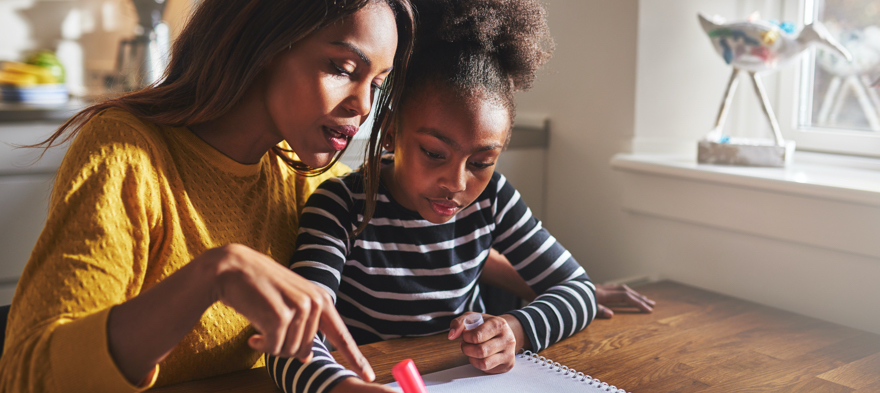
Having a child with a disability, and becoming disabled myself, has put me through a boot-camp that prepared me for the war for quality services for folks with disabilities. I had to learn a new language (so many acronyms!), preferred labels, federal laws, state laws, service providers, what is an Individualized Education Program (IEP), and most importantly, how to fight for full accessibility and quality of life for myself and for my child.
If special education is a war, then IEP meetings are the bi-yearly battles.
On one side of the battle, the schools are powerful institutions that hold the fate of our children in their hands, with very little oversight. Schools simply weren’t designed for children with disabilities, which often makes it unnecessarily difficult to access self-determined services. Even more, the bureaucratic red-tape, coupled with high costs make many necessary services unavailable or unaffordable.
For many people with disabilities, especially children, their families are their primary advocates for their federal and state rights to inclusion. Much of the progress made for children with disabilities was the result of victories won by unrelenting, passionate warrior parents, who refused to accept what schools were offering for their children.
But [pullquote]I have found that there are voices missing from the ranks—the voices of the students with disabilities.[/pullquote] As a parent, I struggle so much with this! My husband and I want the best for our children, as do all parents, and we believe we know what is best for our children. But we’re not in school every day and, at some point, our daughter needs to learn how to advocate for what she wants and needs on her own. With neuro- and physical-typical children, this struggle for autonomy usually plays out in the teenage years with a huge rebellion for “independence.” For children with disabilities, this natural part of development, to make one’s own decisions, good or bad, is often taken away.
This is why [pullquote position="right"]it's important to make self-advocacy mandatory in all decisions and discussions about the life of children with disabilities.[/pullquote] In school, this starts with the IEP—a legal document that lays out the accommodations that the student with a disability is legally required to receive in order to succeed. However, at IEP meetings, even parents are not involved in creating plans, let alone the children.
The answer is “person-centered planning.” It is a tool—a technique—but it is also a shift in how we approach children with disabilities in schools. Person-centered planning says that all decisions about a student with a disability start with, and should be guided by, the student with the disability. Person-centered planning prioritizes the student’s wants, interests, needs, into all accommodation planning.
For example, my daughter enjoys socializing with her peers. Unfortunately, a lot of social activities are hard to navigate for someone on the autism spectrum with sensory processing disorder. But being part of a team, specifically a baseball team, is important to my daughter, so it is up to us—her parents and her IEP team—to figure out how she can participate, instead of saying "no" because we know she may not be successful in that setting.
And person-centered planning isn’t only for social goals. When we pay attention to a child’s individual strengths and preferences, and also recognize what support looks like for them, we help them to become successful, self-aware life-long learners. And if academic achievement is truly important, like it is to me and my husband, we have to involve our children in the process.
As a person committed to person-centered planning with my daughter, but also a parent who is slightly obsessive about making sure my child has everything she needs (helicopter parent), I want to incorporate person-centered planning into everything. My daughter's IEP was a great opportunity for me to start.
I am so very blessed that I asked my daughter to name her own goals because what she outlined was far better than anything the school or my husband and I could create. When asked what she needed to succeed, she said:
These three simple suggestions guided the entire plan. And, her suggestions have made her school year not only tolerable, but also enjoyable. Further, involving her in the decisions that impact her education today is helping her to build and practice the skills and develop the confidence to advocate for her needs in the future.
As my daughter gets older, my husband and I realize that it will be up to her to manage her limits. For us, academic success is a part of we want for our daughter, but it’s more important that she understands her body, her learning styles, self-regulation and self-advocacy—and how to be a confident, independent person on the autism spectrum, who is empowered by the knowledge of her personal goals, interests and limitations.
ShaRhonda Knott-Dawson is the mother of two free-spirited, strong-willed girls and has a husband who should be appointed a saint for co-existing in the madness that is their life. She writes on politics, education, current events and social justice. She is also a taco enthusiast, a proud member of the Bey-hive, and truly believes that she will be receiving her letter from Hogwarts any day now.
The fight for educational equity has never been just about schools. The real North Star for this work is providing opportunities for each child to thrive into adulthood. This means that our advocacy...
Your donation will support the work we do at brightbeam to shine a light on the voices who challenge decision makers to provide the learning opportunities all children need to thrive.
Ed Post is the flagship website platform of brightbeam, a 501(c3) network of education activists and influencers demanding a better education and a brighter future for every child.
© 2020–2024 brightbeam. All rights reserved.